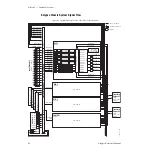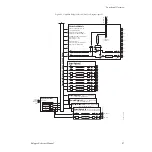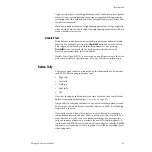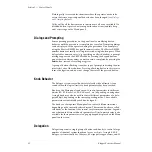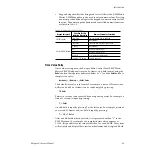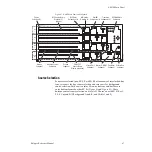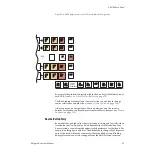
Kalypso Reference Manual
63
Introduction
matte generators, making dedicated controls for each object unfeasible.
Delegation connects a group of controls, typically a subpanel, to a partic-
ular object. Delegation can greatly reduce confusion over which button to
press or which knob to turn to control each object in the system. See the sep-
arate Kalypso User Manual for more information about delegation.
The following areas of the Kalypso Main panel use delegation:
•
Keyers, Masks, Mattes, and Transform subpanels
•
E-MEM keypads
•
M/E source select bus delegation, where holding down a source select
modifier button (
Alt Buse
s,
UnShift
,
Shift
,
Key Split
,
Near Side
,
Far Side
) dele-
gates the M/E buses for different source selections.
The following types of Main panel delegation are available:
•
Automatic subpanel delegation, in which one or more subpanels auto-
matically delegate to control a specific object when it is selected on the
Main panel. Automatic delegations available are listed in
•
M/E Keyer manual delegation buttons, used to delegate the
Keyers/Masks subpanel, Mattes subpanel, and/or the Transform sub-
panel to control an individual keyer of that M/E.
•
Subpanel manual delegation buttons, which are groups of buttons in
the Keyers, Masks, Mattes, and Transform subpanels that are used to
choose exactly which object to control from that subpanel.
•
Momentary delegation, in which holding down a button delegates
control to an object only as long as the button is held down.
Table 2. Automatic Delegations
Subpanel Auto Delegated
Function Initiating Auto Delegation
Keyers and Masks subpanels
Keyer source selection
Keyer selection for next transition
Placing keyer on air.
Pressing an M/E Keyer Delegation button
Mattes and Copy/Swap subpanels
Keyers/Masks sub panel delegation (manual or auto) with a
matte active
Activating a matte fill or borderline in the keyer subpanel
Activating a wipe border
Activating a wipe (e.g., in transition panel or keyer preset pat-
tern) with a border active








